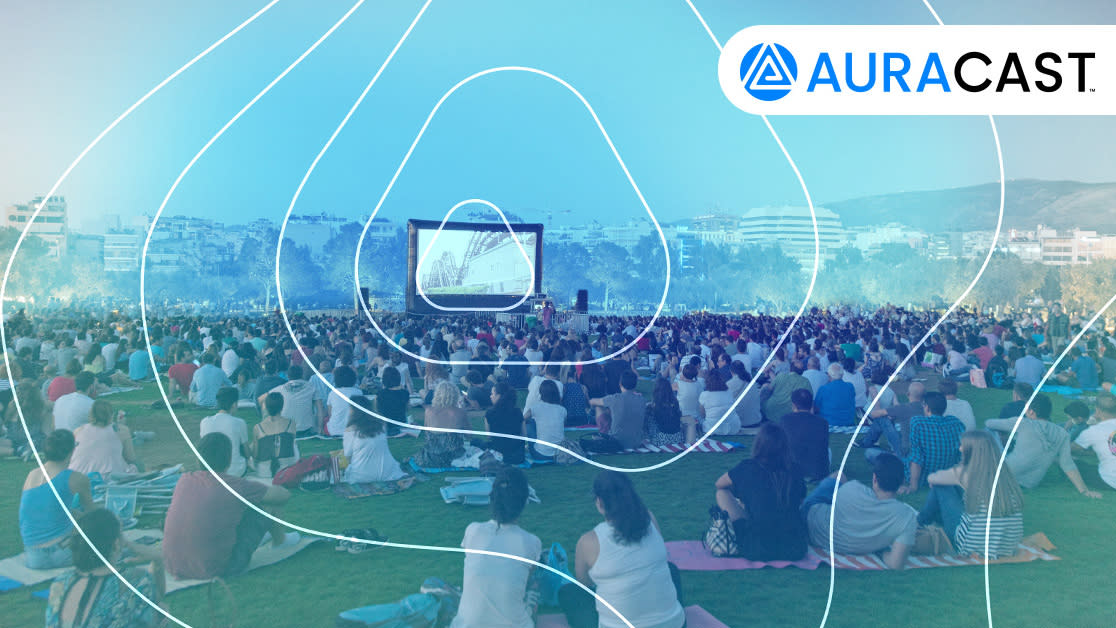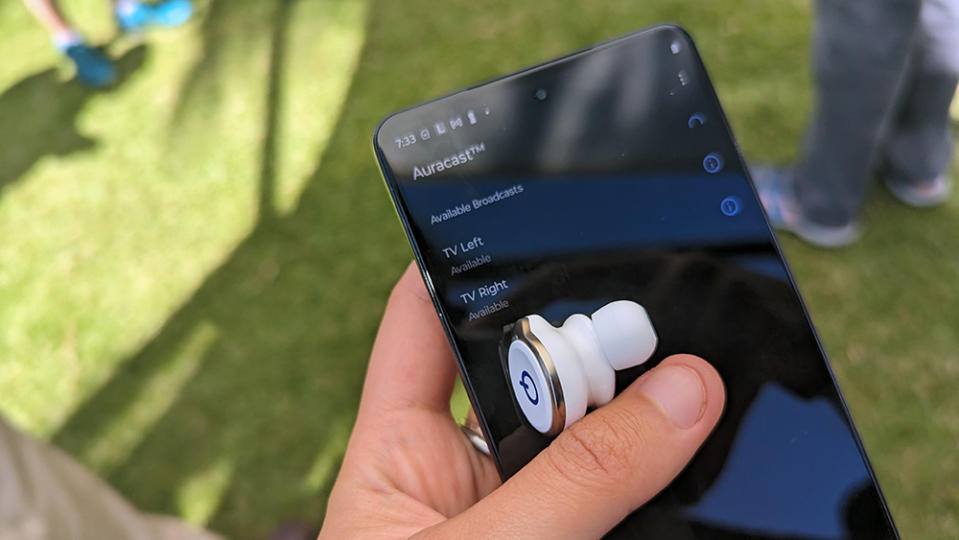What is Auracast? And when is the revolutionary Bluetooth audio-sharing tech coming?

“Welcome to the year of the whores” has to be up there as one of the best real-time TV subtitle whoopsies of them all, as the BBC’s Tina Daheley ushered in the Chinese Year of the Horse in 2014. Close behind it is surely presenter Dan Walker referring to the English seaside town Cromer as famous for its “crap” (instead of crabs), and Manchester United midfielder Adnan Januzaj once being subtitled as "Janet Jazz Jazz Jam".
Last year, we were watching Formula 1 on a pub TV and noticed how many words the subtitles got wrong (though none to the same bemusement of those notorious blunder examples) or just plainly missed. Live subtitles provide an indispensable service for the deaf and hard of hearing, of course, and we're not at all here to bash the efforts of hard-working captioners. But that shoddy F1-watching pub experience could be a thing of the past with the arrival of a new broadcast audio technology that promises to make experiencing audio content in public spaces much better.
Say hello to Auracast.
What is Auracast?
Auracast is one of the features that the Bluetooth Special Interest Group (Bluetooth SIG) – a global community of 36,000 companies responsible for setting Bluetooth technology standards – has included in its latest specifications for the Bluetooth LE (Low Energy) Audio standard (which also, by the way, introduced the LC3 codec for supposedly better quality audio at lower data rates and increased power efficiency compared to the ‘standard’ SBC Bluetooth).
It is actually a rebranded version of a feature SIG introduced much earlier – Audio Sharing – which focused more on sharing audio between source devices as opposed to broadcasting out multiple channels. The Bluetooth SIG likens the technology to how radio signal is transmitted, in that a standard radio transmitter sends out one signal that any number of in-range radio receivers can tune in to.
So put simply, Auracast is a Bluetooth feature that essentially allows a source device, like a TV or phone, to broadcast one or more audio streams to an unlimited number of audio receivers such as earbuds, speakers or hearing aids, owners of which can then choose which audio stream(s) they want their listening device to tune into.

Auracast use cases – personal audio in public spaces
In a pub with numerous TVs showing different sports, each TV’s audio could be broadcast out for pub-loafers to dial their earbuds into if they like so they get the proper commentary as opposed to relying on watching imperfect subtitles.
Now, we know what you’re about to say – “how anti-social is that?” But for solo drinkers or indeed for killing time at airport bars, Auracast could be the perfect solution for a perfect situation. Honestly, even if you’re at the pub with your mates, you could just put only one earbud in on a low volume and enjoy both social banter and commentary – the best of both worlds.
And away from the pub, of course, Auracast could let you share your music library with every headphone-wearer in your train carriage, allowing fellow in-range travellers to tune into it if they so wish. Instead of the audio commentary for the Wimbledon Championships being blasted loudly through speakers in every square and green space in London, watchers could simply opt to listen via their Bluetooth headphones without any passers-by being audibly violated.
Perhaps a plane’s PA system could work similarly so that those blaring music through their headphones might not miss that all-important meal announcement. At the gym? You could replace the TV screen subtitles with audio in your headphones. At an exhibition? You could tune your own headphones into the exhibition's audio track rather than have to wear the God-awful headsets often handed out. It could offer a tour translation in any language, too. You get the picture.
An Auracast transmitter could supposedly be picked up within a 30,000 square-feet radius, so you can imagine its potential.
This goes for people using hearing aids too, on a more serious note, as Auracast will be able to deliver streams directly to the ear canals via the (compatible) hearing aid, as opposed to the hearing aid processing sound from its surroundings. Indeed, one of the goals of Auracast is for it to become an “advanced, new assistive listening system”.

What devices support Auracast?
For a device to support Auracast, it must support Bluetooth 5.2 or later (as many wireless headphones from the past few years do) and the Public Broadcast Profile (PBP) spec within the new LE Audio standard (not as widely supported from a hardware perspective). Be aware that just because a product supports Bluetooth 5.2 doesn't mean it supports Auracast.
Auracast is supported by Android 13 and 14 (no word on iOS) and by Qualcomm’s latest two generations of audio and mobile chips that are in various headphones and phones of this year and next. TVs would need to support Auracast too (Samsung has announced that its high-end Neo QLED 8K Micro LED TVs will), or alternatively – and most likely – connect to some sort of plug-in Auracast transmitter that is bound to show up on the market soon.
Actual nameable Auracast-compatible products were pretty few and far between... until CES 2024. At January's annual consumer electronics show, more than a few products launched with Aurcast support, including JBL's latest Bluetooth speakers (the Xtreme 4, Clip 5, Go 4 and PartyBoxes) and Sennheiser's latest flagship earbuds, the Momentum True Wireless 4. They join existing Auracast supporters such as the Philips Fidelio L4 headphones, EarFun Air Pro 3 earbuds and Samsung Galaxy Buds 2 Pro.
According to a blog post on Bluetooth.com, "by 2027, there will be more than three billion LE Audio-enabled devices on the market, which will, in turn, incentivize nearly 2.5 million public venues to deploy Auracast broadcast transmitters globally by 2030". The idea is that it'll eventually be supported by phones, laptops and tablets as well as a plethora of headphones and public space equipment.
It’s a promising road for Bluetooth to travel down. Auracast could genuinely open up a whole new world of audio experiences on a range of scales, not least for those with hearing loss.
MORE:
aptX Lossless: what is the breakthrough Bluetooth codec? How can you get it?
Wi-fi for headphones is great news for sound quality, so is it the death knell for Bluetooth?
The best wireless earbuds you can buy
